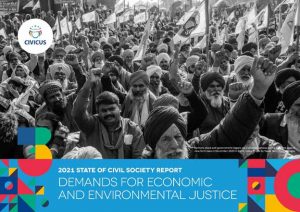Sophie Chalk
“The role of the media in tackling HIV related stigma is crucial. It is seen as one of the drivers of HIV reduction, yet the media is far from reaching its full potential….Many of our interviewees believe there is fatigue with HIV in the mainstream media…”
This is one of the key findings from this report, which provides an overview of media initiatives that seek to reduce HIV-related stigma and explores what works and what doesn’t. As explained here, stigma can stand in the way of people (especially sex workers and their clients, men who have sex with men, the transgender community, and people who inject drugs) accessing life-saving treatment. The media has a key role to play in challenging ignorance, prejudice, and fear, while also providing accessible information to support people in accessing sexual and reproductive health and HIV services. “…[Y]et the media is far from reaching its full potential…”
To inform this report, the International Broadcasting Trust (IBT) and the International Planned Parenthood Federation (IPPF) conducted desk research, 22 telephone or face-to-face interviews (with journalists, policymakers, academics, and representatives of non-governmental organisations (NGOs), amongst others, from Canada, India, Malaysia, Nigeria, Zambia, South Africa, Uganda, Swaziland, Argentina, the United States, and the United Kingdom). The researchers also took a field trip to Swaziland in April 2014, where 24 additional interviews were conducted and two informal focus groups were held. One focus group comprised people living with HIV; the other comprised a group of young people from the general population. The report is filled with reflections from these participants.
One such question explored during the research process revolves around whether direct messaging works – does it genuinely engage the public and lead to behaviour change or is a more nuanced approach required?
In brief, researchers found that, “[w]hile the tone of media coverage has improved in some countries, this is no longer a story that engages journalists – or the public. Newspapers were singled out for their tabloid and sensationalised coverage of people living with HIV.”
That said, the researchers note that, in many countries, “training of journalists has had a notable impact. Enabling journalists to hear the personal testimony of people living with HIV gives them a powerful insight into the human story. There are numerous models of media intervention: TV and radio drama; sponsored TV or radio talk shows; journalism training; the creation of journalist networks; public service announcements (PSAs); feeding storylines into existing dramas; multi-platform approaches; reactive campaigns, and comedy.” Several examples of such interventions from around the world are provided in the report.
It is recommended that NGOs working on HIV media campaigns determine which model of media will lead to changes in norms and reduce HIV-related stigma. In terms of the type of media, the researchers found that newspapers are “an important driver of public opinion; they influence decision makers and set the agenda for other media coverage.” Also, TV and radio dramas have been effective at “engaging audiences and making them more sympathetic towards people living with HIV, particularly when it can be done on the scale of African TV dramas like Soul City or Shuga.”
The Swaziland case study begins on page 14 of the report. The researchers chose this country not only because it has highest prevalence of people living with HIV in the world (26%) but also because it provided them with the opportunity to examine less-high profile, small-scale media projects. Just one excerpt from this portion of a report (from a person living with HIV, spoken during a focus group discussion): “I haven’t seen the media play a very active role with positive stories. I have lived with HIV for a very long time. The media haven’t caught up with the story that people live longer now. It’s either journalists have not got enough information or they just don’t want to flag up the positives about HIV.”
Recommendations from the entirety of the research include:
• Ensure that media projects aiming to reduce HIV stigma are evidence-based, researched, and targeted.
• Replicate projects that can demonstrate an impact.
• Focus more on media for and about key populations at higher risk of HIV exposure.
• Facilitate collaboration amongst NGOs so that they can scale up output rather than duplicate content.
• Use media more effectively to engage decision makers and influencers.
• Provide opportunities for journalists to access more human interest stories.
• Prioritise drama, because it engages audiences at a deeper, more emotional level than factual content.
• Improve the tone of factual content so it engages rather than lectures audiences.
• Feature more role models in the media to be followed and aspired to by people living with HIV.
• Make media intervention approaches long-term and strategic rather than ad hoc.
These recommendations are laid out in full on page 22 of the report.
Source: Email from Sophie Chalk (International Broadcasting Trust (IBT) to The Communication Initiative on September 16 2014; and IPPF website, accessed September 23 2014. Image credit/caption: Sven Torfinn/Panos. “The picture shows Judith Atieno Basil, the secretary of Ulusi Youth Group. The group raises awareness within the community on a range of issues including HIV. When she lost her parents at the age of 12 from AIDS-related illness, she had to leave school, get married and raise her siblings.” – Communication Initiative




